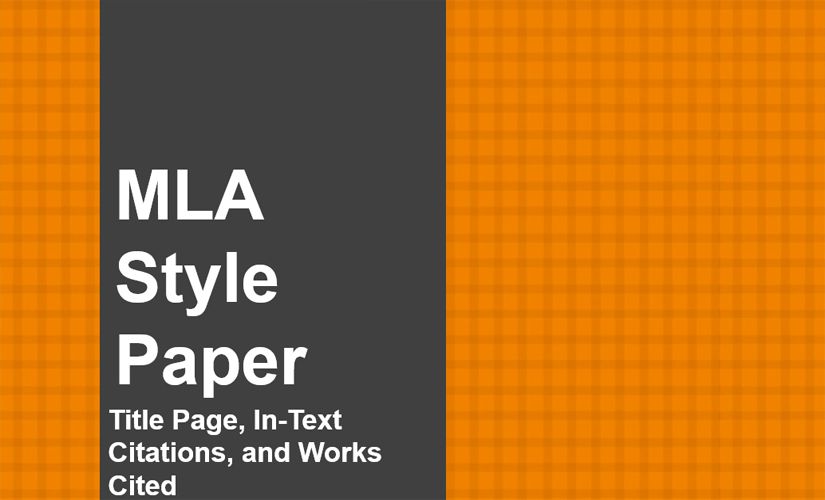Modern Language Association (MLA) developed the writing style for use in humanities. Basically, the MLA style allows scholars to acknowledge information from external sources to avoid all forms of plagiarism. However, this format is different from other academic writing styles. In turn, the general rules for the MLA style paper do not require a title page, uses author-page or -paragraph in-text citations, and contains a Works Cited page that lists all references in alphabetical order.
Title Page
The MLA style paper does not require a separate title page. For example, the content of an article written in the MLA style begins on the first page. Along these lines, the MLA title page does not require a separate page containing the title and identification details. For example, one must provide the identification details and begin to write the content of an essay on the first page. In this case, the identification details must appear at the left-upper corner of the page. Also, the title and the content must follow the identification details without leaving a space between lines. Thus, the MLA format paper does not need a separate title page.

In-Text Citations in the MLA Style Paper
The MLA style paper requires author-page or -paragraph in-text citations. For example, one must provide the MLA in-text citation that contains the author’s name and page number containing the quoted information. Basically, this style applies to printed sources that have numbered pages. In turn, space separates the author’s name and the page number. Besides, the MLA citation requires writers to use author-paragraph citations for sources without page numbers. For instance, a writer must identify the paragraph number containing the information quoted. Hence, one must use the phrase “par.” to precede the paragraph number when citing a website MLA. Besides, space should separate the author’s name and the phrase “par.” in the MLA paper format. Thus, academic papers that follow the MLA style citation must have author-page or -a paragraph for in-text citations.
Works Cited
The MLA style paper includes the MLA Works Cited that contains the quoted sources. For example, the MLA format Works Cited must begin in a separate page that contains the title “Works Cited.” Basically, this title must appear at the center of a new page in title case. In this case, one should not bold or underline this title. Then, a list of the sources quoted arranged in alphabetical order must follow the centered title. In this case, sources should appear in alphabetical order of their author’s surname. Also, the list of references must have standard spacing and capitalization. In turn, every entry should appear in hanging indentation. Besides, the headings of the sources must appear in title case. Thus, papers in the MLA format must have a detailed Work Cited page that lists all the sources used in in-text citations.
Conclusion on the MLA Style Paper
In conclusion, the MLA style paper does not require title pages. Firstly, one must provide identification details at the left-upper end of the first page. Basically, a centered heading and content of the paper appear below the identification details. Then, the MLA citation guide requires writers to user author-page text citations for printed sources. Also, the style advocates for author-paragraphs text citations for unprinted sources. In turn, the last section in a paper formatted in the MLA style is the MLA format Work Cited page. Particularly, this section contains all sources arranged in alphabetical order. Besides, the references in the MLA format paper example appear in hanging indentation and with capitalized headings.

